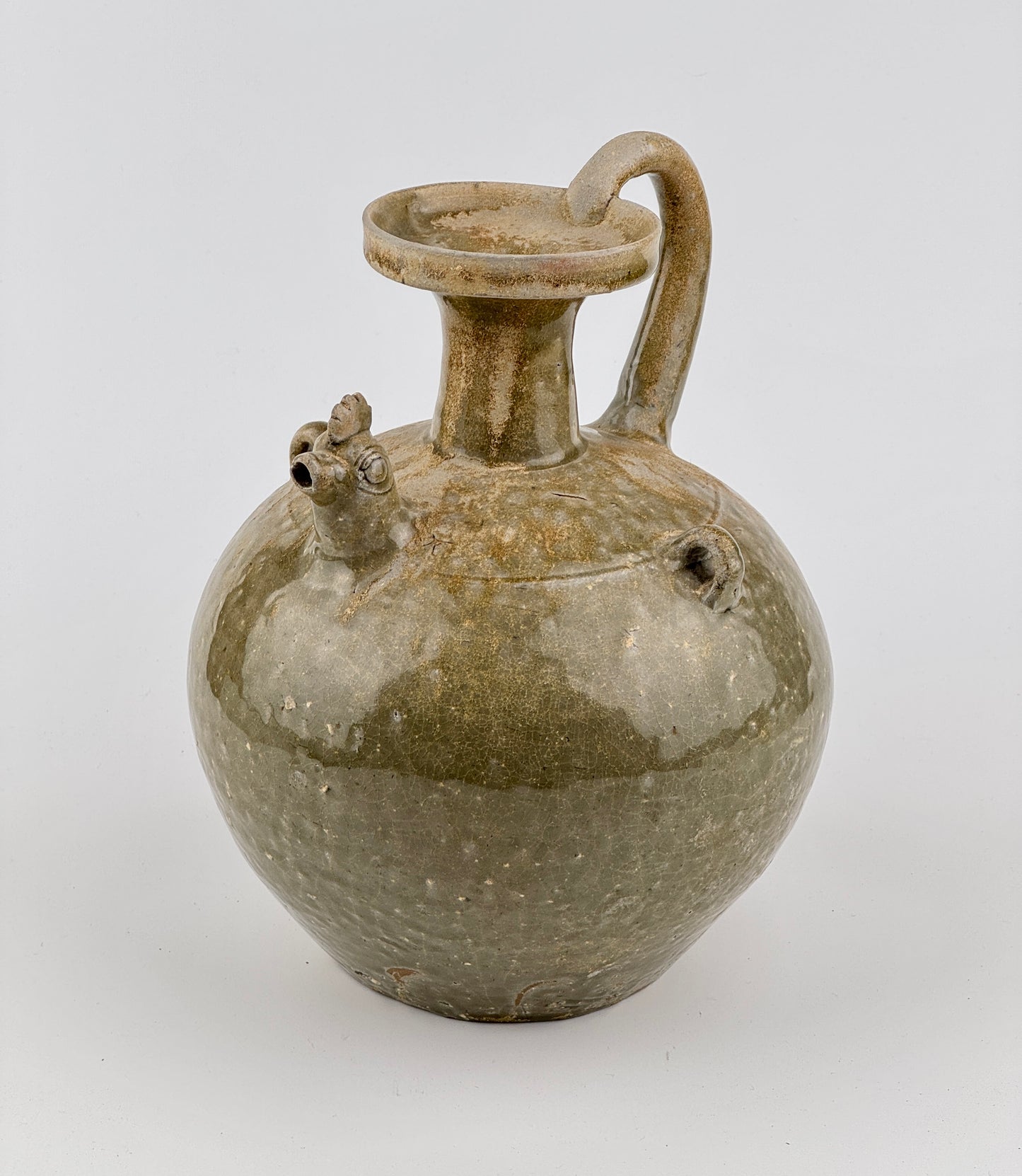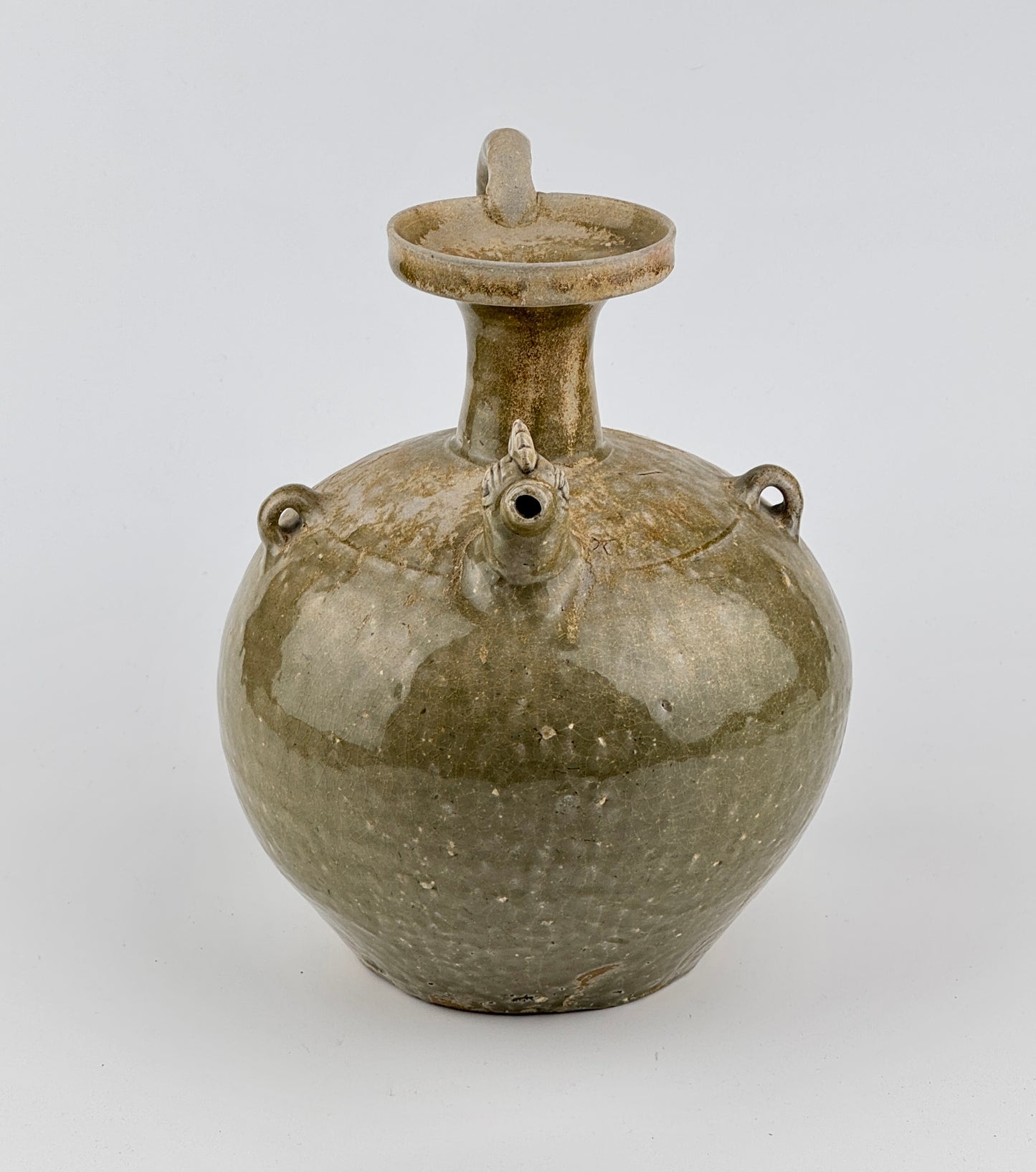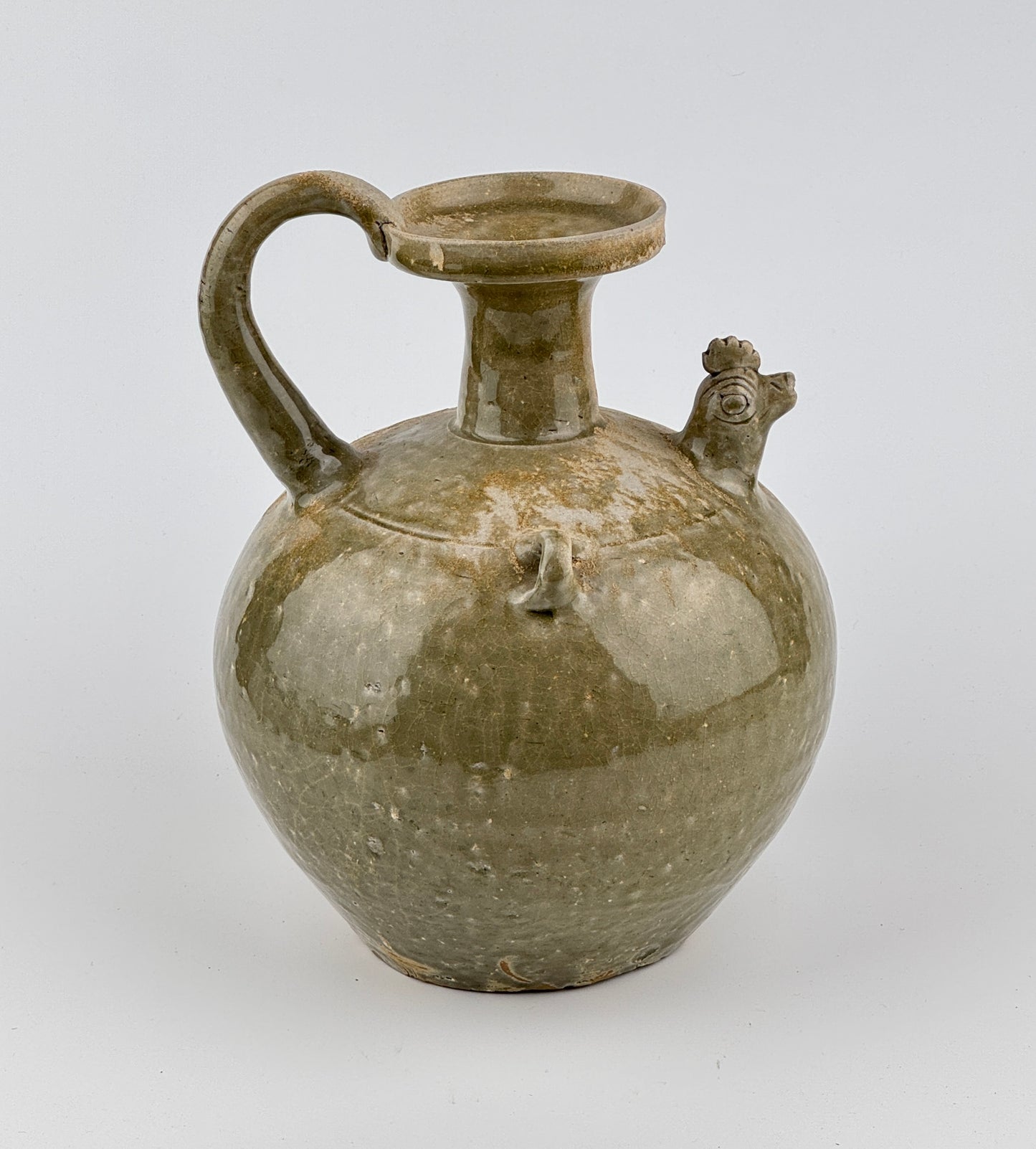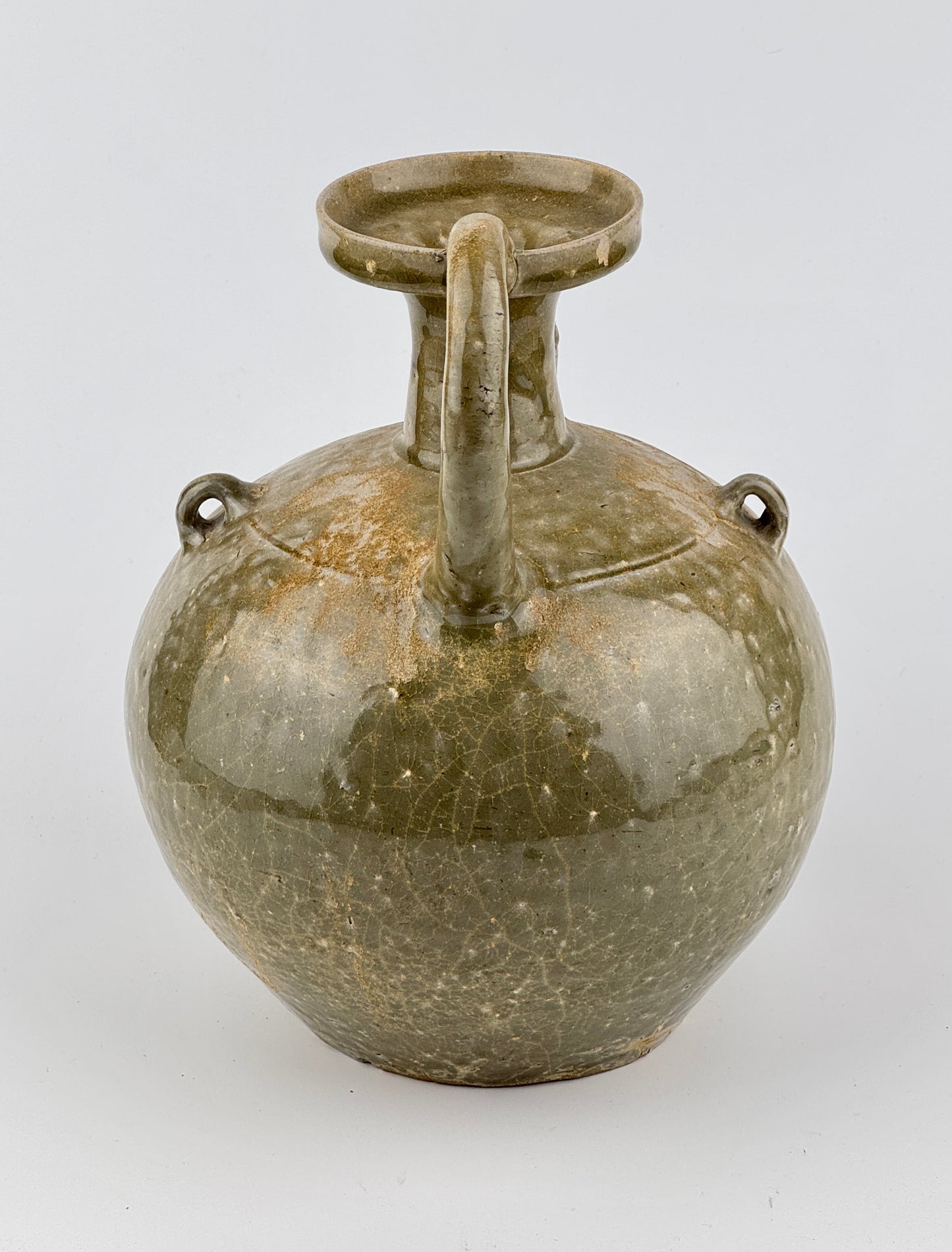RARE YUE CELADON CHICKEN-HEAD EWER, JIN-SOUTHERN DYNASTY
RARE YUE CELADON CHICKEN-HEAD EWER, JIN-SOUTHERN DYNASTY
Couldn't load pickup availability
Chicken-head ewers are among the most distinct and emblematic pottery pieces from the Han (206 BC - AD 220) to the Tang (618-907) dynasties. Their production commenced during the Jin dynasty (265-420) in the southern Yue kilns of Zhejiang province. The design was quickly produced by other southern area and eventually embraced by northern celadon kilns.
The widespread application of such ceramic vessels, including in the burial sites of emperors, underscores the fortuitous connotations of the chicken motif. Chickens were considered to possess the capability to dispel evil, heal ailments, and produce other benevolent effects.
Period : Jin-Southern Dynasty (266 - 589 AD)
Type : Ewer
Medium : Yue celadon(Stoneware)
Dimension : 24cm(Height) x 8.5cm(Mouth Diameter)
Provenance : The piece was acquired in Hong Kong in the late 1990s
Condition : Good(There are traces of natural oxidation on the mouth and neck areas)
Reference :
1) Ashmolean Museum - Accession no.EA1956.286
(Type : Closely related)
http://jameelcentre.ashmolean.org/collection/921/object/11771
2) Sotheby's Hongkong 27 November 2020 - CHINA / 5000 YEARS 博古五千 - Lot 384
(Price Range : 260,000HKD-360,000HKD / Type : Closely related)
https://www.sothebys.com/en/buy/auction/2020/china-5000-years/a-rare-yue-celadon-chicken-head-ewer-western-jin
* Yue Celadon
Yue celadon, also known as Yue ware, is a type of Chinese pottery with a celadon glaze, originating from the eastern Han dynasty (25-220 AD) in the Zhejiang province. The name 'Yue' comes from the Yue kilns which were among the earliest to develop the celadon technique. Yue ware is known for its jade-like glaze, which can range in color from bluish-green to olive green.
Yue celadon was highly regarded during its time and was the first Chinese ware to be imported in large quantities to the Middle East and Africa, significantly influencing the development of ceramics in those regions. The production of Yue ware continued to evolve, and during the Tang dynasty (618-907 AD), it became more refined with more complex shapes and decorations. By the time of the Song dynasty (960-1279 AD), it had greatly influenced other kiln traditions, leading to the development of the classic longquan celadon, which became one of China’s most famous ceramic products.
Yue celadon traditionally embodies elements of auspiciousness and good fortune in Chinese culture. The jade-like celadon glaze is often associated with longevity and health. Various motifs and shapes inscribed on the pottery frequently symbolize luck and prosperity. For example, lotus patterns may represent purity and immortality, while animal figures like the lion symbolizes power, courage, and strength. Lions are considered protectors that ward off evil spirits and bring forth good luck. Furthermore, Yue celadon wares were commonly used as tomb offerings in ancient China, believed to bring fortune and well-being to the deceased in the afterlife.


























